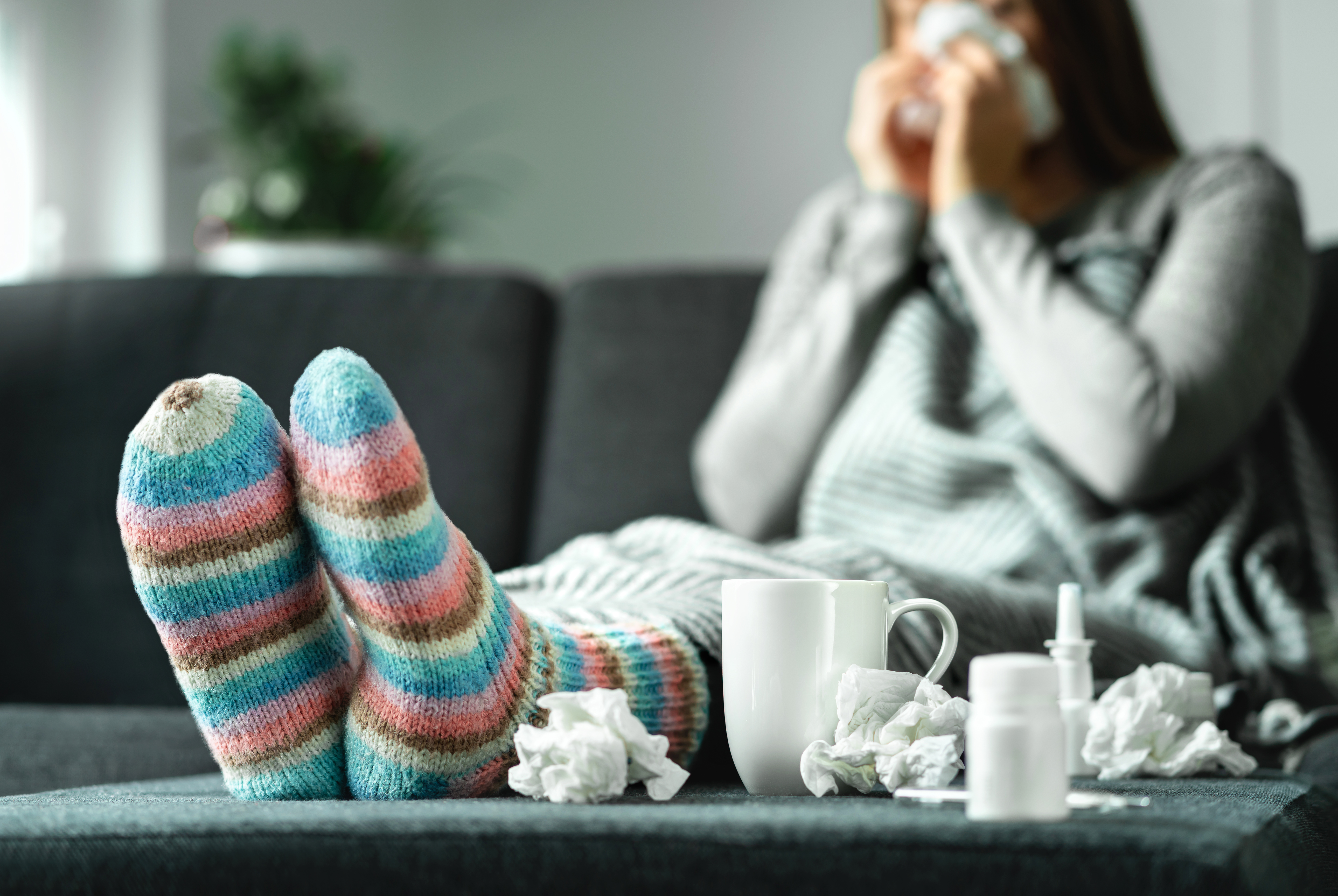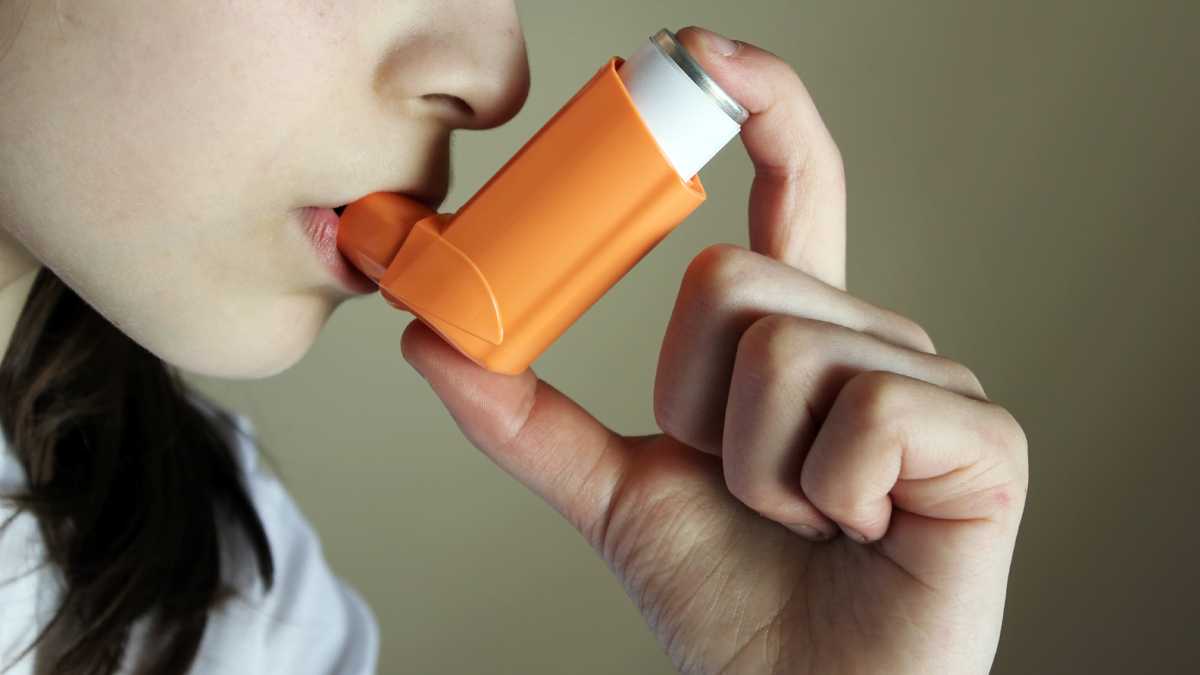With new vaccine formulas and more free tests becoming available, what should you know if you test positive for COVID this summer?
Case numbers appear to be on a slight decline after a mini summer surge, but that could change as new tests become available, kids head back to school and fall weather sends more people inside.
If you contract COVID, the guidelines for what you'll need to do may be different from before, due to significant changes initiated by the CDC earlier this year.
Here's what to know:
What are the symptoms?
- Cough
- Sore throat
- Runny nose
- Sneezing
- Fatigue
- Headache
- Muscle aches
- Altered sense of smell
- Congestion
- Fever or chills
- Shortness of breath or difficulty breathing
- Nausea or vomiting
- Diarrhea
Recent reports have centered on specific gastrointestinal symptoms and COVID.
Dr. Katelyn Jetelina, a scientific consultant for the CDC and epidemiologist, said "gastrointestinal issues including nausea, vomiting, and diarrhea" have been previously identified as possible symptoms of COVID-19.
"We do not have specific data about the incidence of GI symptoms with the current strains of the virus, but COVID-19 symptoms can certainly differ based on the variant and the individual," Jetelina told NBC Chicago in July.
Last year, a Chicago-area doctor said she's noticed shifts in the most common symptoms her patients reported as the JN.1 variant rose to dominance.
Feeling out of the loop? We'll catch you up on the Chicago news you need to know. Sign up for the weekly Chicago Catch-Up newsletter.
Dr. Chantel Tinfang, a family medicine physician with Sengstacke Health Center at Provident Hospital of Cook County, noted at the time that many of the cases she saw reported less of the fever, body aches and chills, and presented more with sore throat, fatigue and coughing.
"We still see some patients experiencing decreased appetite, a loss of taste or smell. So it kind of depends," she said. "One patient was just very, very tired. Like she couldn't really do much. And that's when you know ... it's different. It's not just coughing and shortness of breath. We still see that though."
She suggested consulting with your doctor if your symptoms don't begin to improve outside of the recommended isolation period.
How long does COVID last?
As for timing, symptoms can last for several days, but in some cases, even longer.
"Some people who have been infected with the virus that causes COVID-19 can experience long-term effects from their infection, known as Long COVID or Post-COVID Conditions (PCC)," according to the CDC.
Such symptoms can last for weeks and possibly even years.
Previous timing guidelines centered around five to 10 days, however.
What to do if you test positive?
In March, the Centers for Disease Control and Prevention updated its COVID guidelines to mirror guidance for other respiratory infections. Those who contracted COVID-19 no longer need to stay away from others for five days, the CDC said, effectively nixing the five-day isolation recommendation.
People can return to work or regular activities if their symptoms are mild and improving and it's been a day since they've had a fever, but the CDC still recommends those with symptoms stay home.
"The recommendations suggest returning to normal activities when, for at least 24 hours, symptoms are improving overall, and if a fever was present, it has been gone without use of a fever-reducing medication," the guidance states.
Once activities are resumed, the CDC still recommends "additional prevention strategies" for an additional five days, including wearing a mask and keeping distance from others.
The agency is emphasizing that people should still try to prevent infections in the first place, by getting vaccinated, washing their hands, and taking steps to bring in more outdoor fresh air.
As part of the guidance, the CDC suggests:
- Staying up to date with vaccination to protect people against serious illness, hospitalization, and death. This includes flu, COVID-19, and RSV if eligible.
- Practicing good hygiene by covering coughs and sneezes, washing or sanitizing hands often, and cleaning frequently touched surfaces.
- Taking steps for cleaner air, such as bringing in more fresh outside air, purifying indoor air, or gathering outdoors.
The change comes at a time when COVID-19 is no longer the public health menace it once was. It dropped from being the nation's third leading cause of death early in the pandemic to 10th last year.
Most people have some degree of immunity to the coronavirus from past vaccinations or from infections. And many people are not following the five-day isolation guidance anyway, some experts say.
Where can you get free COVID tests?
On the heels of the summer wave of COVID-19 cases, Americans will be able to get free virus test kits mailed to their homes, starting in late September.
U.S. households will be able to order up to four COVID-19 nasal swab tests when the federal program reopens, according to the website, COVIDtests.gov. The U.S. Health and Human Services agency that oversees the testing has not announced an exact date for ordering to begin.
The tests will detect current virus strains and can be ordered ahead of the holiday season when family and friends gather for celebrations, an HHS spokesperson said in an emailed statement. Over-the-counter COVID-19 at-home tests typically cost around $11, as of last year.
What is the latest vaccine update?
U.S. regulators approved updated COVID-19 vaccines on Thursday, shots designed to more closely target recent virus strains -- and hopefully whatever variants cause trouble this winter, too.
With the Food and Drug Administration’s clearance, Pfizer and Moderna are set to begin shipping millions of doses. A third U.S. manufacturer, Novavax, expects its modified vaccine version to be available a little later.
The Chicago Department of Public Health said shipment of vaccines will be determined by the manufacturers, so individuals should "check with local pharmacies and their medical office to learn when the vaccine is expected to be available."
"We strongly encourage those who are eligible to consider receiving an updated COVID-19 vaccine to provide better protection against currently circulating variants,” said FDA vaccine chief Dr. Peter Marks.
The agency's decision came a bit earlier than last year's rollout of updated COVID-19 vaccines, as a summer wave of the virus continues in most of the country. The Centers for Disease Control and Prevention already has recommended this fall's shot for everyone age 6 months and older. Vaccinations could be available within days.
While most Americans have some degree of immunity from prior infections or vaccinations or both, that protection wanes. Last fall’s shots targeted a different part of the coronavirus family tree, a strain that’s no longer circulating -- and CDC data shows only about 22.5% of adults and 14% of children received it.
Skipping the new shot is “a hazardous way to go,” because even if your last infection was mild, your next might be worse or leave you with long COVID symptoms, said Dr. Robert Hopkins Jr. of the National Foundation for Infectious Diseases.
Which variant is spreading most?
This fall's vaccine recipe is tailored to a newer branch of omicron descendants. The Pfizer and Moderna shots target a subtype called KP.2 that was common earlier this year. While additional offshoots, particularly KP.3.1.1, now are spreading, they’re closely enough related that the vaccines promise cross-protection. A Pfizer spokesman said the company submitted data to FDA showing its updated vaccine “generates a substantially improved response” against multiple virus subtypes compared to last fall’s vaccine.
The series of COVID strains, nicknamed the "FLiRT" variants, are dominating across the U.S., according to data from the CDC.
These new variants, which scientists dubbed "FLiRT" after the locations of their spike protein mutations, have been circulating in the U.S. since the early spring.
Scientists have warned that the FLiRT variants may be better at evading the immune system due to their spike protein mutations, and that waning immunity and poor uptake of the latest COVID-19 vaccine have created a more susceptible population.




